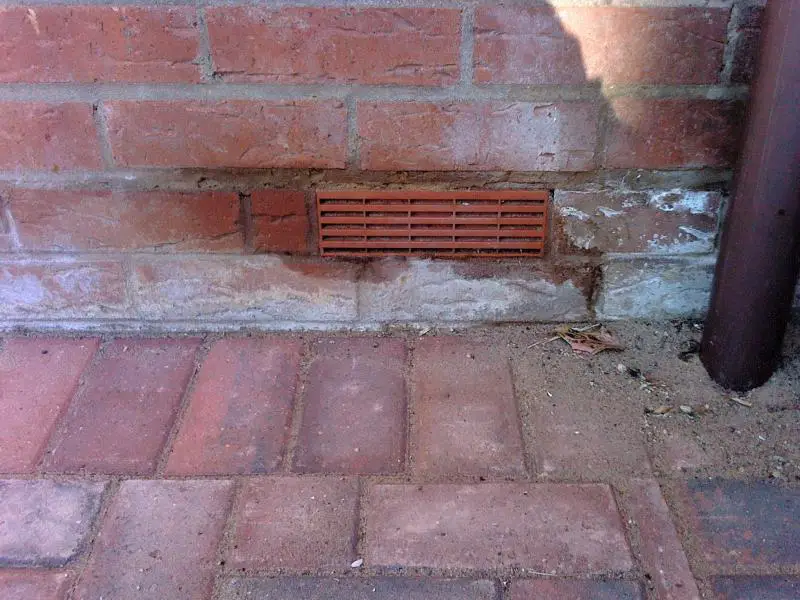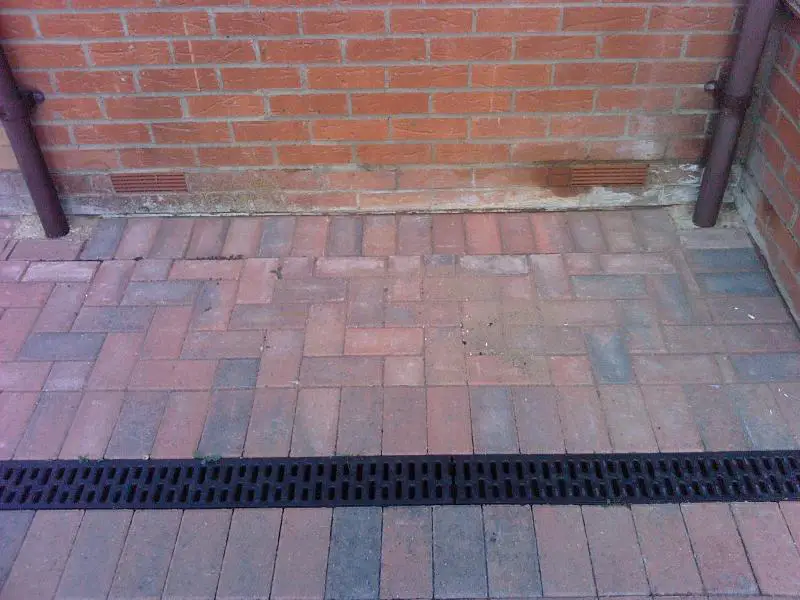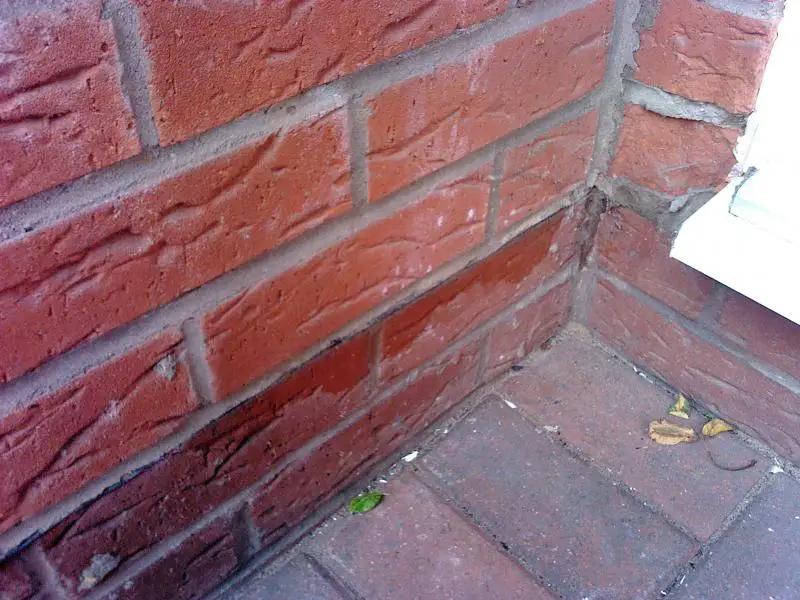Dear forum members,
I have an issue with damp patches on the kitchen exterior wall which do not appear to be related to weather conditions, photos attached below . Usually the pattern is it’s very damp in the morning and then dries off during the day, so I noticed it when leaving for work in the morning, by the time I return it’s fairly dry again. The water marks running down the wall behind the drain pipe aren’t related to this but a previous incident where the drain pipe became disconnected from the guttering hence water was dripping straight onto the wall from the porch above.
I noticed these damp patches a shortly after a block driveway was laid – previously the area was majority grass and the area next to the wall was a soil patch with lots shrubs and herbs growing, so if the issue was there before I would not have seen it. I have had a couple of professionals around but they cannot see a cause and haven’t really been able to help. A drainage company came round to examine the possibly of a water mains leak and concluded it was not, they also checked the drain pipes for blockages and concluded that was ok. A plumber came round to see if there was an internal leak and concluded there was not. The inside wall is not damp.
I have removed the air brick to have a look and couldn’t really conclude anything from that other than the mortar was soft and crumbly. The only next step I can think of would be to lift the blocks around the wall unless anyone has other ideas? Any advice appreciated – this issue has been giving me a headache.
Many thanks.
[/img]
![GALLERY]](http://[GALLERY=media, 38970][/GALLERY])
![GALLERY]](http://[GALLERY=media, 38972][/GALLERY])
I have an issue with damp patches on the kitchen exterior wall which do not appear to be related to weather conditions, photos attached below . Usually the pattern is it’s very damp in the morning and then dries off during the day, so I noticed it when leaving for work in the morning, by the time I return it’s fairly dry again. The water marks running down the wall behind the drain pipe aren’t related to this but a previous incident where the drain pipe became disconnected from the guttering hence water was dripping straight onto the wall from the porch above.
I noticed these damp patches a shortly after a block driveway was laid – previously the area was majority grass and the area next to the wall was a soil patch with lots shrubs and herbs growing, so if the issue was there before I would not have seen it. I have had a couple of professionals around but they cannot see a cause and haven’t really been able to help. A drainage company came round to examine the possibly of a water mains leak and concluded it was not, they also checked the drain pipes for blockages and concluded that was ok. A plumber came round to see if there was an internal leak and concluded there was not. The inside wall is not damp.
I have removed the air brick to have a look and couldn’t really conclude anything from that other than the mortar was soft and crumbly. The only next step I can think of would be to lift the blocks around the wall unless anyone has other ideas? Any advice appreciated – this issue has been giving me a headache.
Many thanks.
[/img]




